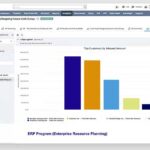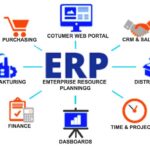The Best Fluffy Pancakes recipe you will fall in love with. Full of tips and tricks to help you make the best pancakes.
Business Analysis Requirements Gathering Template
In today’s rapidly evolving business landscape, effective requirements gathering is crucial for the success of any project or initiative. Business analysis requirements gathering involves identifying, documenting, and managing the needs and expectations of stakeholders to ensure that the final solution meets their requirements.
To streamline and optimize this process, many organizations rely on a business analysis requirements gathering template. In this article, we will explore the key components of such a template, the benefits it offers, and how to create and utilize it effectively.

1. Introduction
Requirements gathering is a critical phase in the business analysis process, as it sets the foundation for a successful project. It involves understanding the needs of stakeholders, translating them into well-defined requirements, and documenting them for further analysis and implementation. Using a business analysis requirements gathering template can greatly facilitate this process.
2. Key Components of a Business Analysis Requirements Gathering Template
A comprehensive business analysis requirements gathering template typically consists of several key components:
2.1 Purpose and Scope
The template should clearly define the purpose and scope of the requirements gathering effort. It sets the context and helps stakeholders understand the objectives and boundaries of the project.
2.2 Stakeholder Identification and Analysis
Identifying and analyzing stakeholders is crucial for gathering comprehensive requirements. The template should include sections to capture stakeholder roles, interests, and potential impacts on the project.
2.3 Business Objectives and Goals
This section of the template focuses on capturing the overarching business objectives and goals that the project aims to achieve. It helps align the requirements with the strategic direction of the organization.
2.4 Current State Assessment
Understanding the current state of the business processes, systems, and data is essential for identifying gaps and improvement opportunities. The template should provide a structured approach to assess the current state and identify pain points.
2.5 Future State Vision
This section helps articulate the desired future state that the project intends to achieve. It outlines the envisioned improvements and serves as a reference point for validating requirements.
2.6 Requirements Elicitation Techniques
A variety of techniques can be used to elicit requirements, such as interviews, workshops, observations, and document analysis. The template should guide analysts in selecting and conducting appropriate techniques.
2.7 Requirements Documentation
Clear and concise documentation of requirements is crucial for effective communication and analysis. The template should provide a structured approach to capturing requirements, including fields for requirement descriptions, priority, source, and associated stakeholders.
2.8 Validation and Verification
Validating and verifying requirements ensure their correctness, completeness, and consistency. The template should include a section dedicated to validation techniques, such as reviews, walkthroughs, and prototyping.
2.9 Change Management
Managing changes to requirements throughout the project lifecycle is essential. The template should address how changes will be documented, evaluated, and approved to maintain traceability and avoid scope creep.
3. Benefits of Using a Template for Business Analysis Requirements Gathering
Utilizing a business analysis requirements gathering template offers several benefits to organizations:
3.1 Consistency and Standardization
A template provides a standardized approach to requirements gathering, ensuring consistency across projects. It promotes uniformity in terminology, structure, and documentation style, facilitating better understanding and communication.
3.2 Time and Cost Savings
By using a pre-defined template, analysts can save time by not having to start from scratch for each project. It eliminates the need to reinvent the wheel and allows them to focus more on analyzing and validating requirements.
3.3 Improved Communication and Collaboration
A well-designed template enhances communication between stakeholders, as it provides a common framework for discussing and documenting requirements. It fosters collaboration among team members and facilitates knowledge sharing.
3.4 Enhanced Quality of Requirements
A structured template guides analysts in capturing complete and accurate requirements. It prompts them to consider various aspects, such as business objectives, stakeholder needs, and future state vision, resulting in higher-quality requirements.
3.5 Facilitation of Traceability and Prioritization
A template aids in maintaining traceability between requirements and their sources, such as stakeholder needs or business objectives. It also helps prioritize requirements based on their impact and alignment with the project’s goals.
4. How to Create an Effective Business Analysis Requirements Gathering Template
To create an effective business analysis requirements gathering template, consider the following steps:
4.1 Understand the Project and Organizational Context
Before developing a template, gain a deep understanding of the project’s context, including its objectives, stakeholders, and constraints. Align the template with the organization’s established practices and methodologies.
4.2 Tailor the Template to Meet Specific Needs
Each project may have unique requirements, and the template should be adaptable to cater to those specific needs. Customize the template by adding or removing sections and fields as necessary.
4.3 Include Relevant Sections and Subsections
Ensure that the template covers all essential aspects of requirements gathering. Include sections and subsections that address stakeholder analysis, current and future state assessment, requirements elicitation techniques, documentation, and change management.
4.4 Provide Clear Instructions and Examples
To assist analysts in effectively using the template, provide clear instructions and guidelines for each section. Include examples and templates of well-written requirements to serve as references.
4.5 Seek Feedback and Continuous Improvement
Regularly gather feedback from analysts and stakeholders who use the template. Incorporate their suggestions and lessons learned to continuously improve the template’s usability and effectiveness.
5. Best Practices for Utilizing a Business Analysis Requirements Gathering Template
To make the most of a business analysis requirements gathering template, consider the following best practices:
5.1 Involve Stakeholders Early and Frequently
Engage stakeholders from the beginning of the requirements gathering process. Seek their input, clarify their needs, and keep them involved throughout to ensure the requirements align with their expectations.
5.2 Maintain Flexibility and Adaptability
While using a template provides structure, remain flexible to accommodate evolving requirements. Allow room for adjustments and updates to the template as the project progresses and new insights emerge.
5.3 Use a Combination of Techniques for Requirements Elicitation
Leverage a variety of techniques to gather requirements effectively. Conduct interviews, workshops, and observations to obtain insights from stakeholders. Analyze existing documentation and systems to uncover hidden requirements.
5.4 Document Requirements Clearly and Concisely
When documenting requirements in the template, strive for clarity and brevity. Use concise language and avoid ambiguity. Include specific details, such as acceptance criteria and constraints, to ensure a thorough understanding.
5.5 Regularly Review and Update the Template
Periodically review and update the template to reflect lessons learned and evolving industry best practices. Stay attuned to changes in the business environment and incorporate new requirements gathering techniques or tools.
6. Conclusion
A well-designed business analysis requirements gathering template serves as a valuable tool for ensuring the success of projects. It provides a structured approach, enhances communication, and improves the quality of requirements. By following best practices and continuously refining the template, organizations can streamline their requirements gathering process and deliver solutions that meet stakeholder expectations.
Incorporating a business analysis requirements gathering template promotes consistency, collaboration, and traceability. It enables organizations to gather accurate and comprehensive requirements efficiently, saving time and costs while ensuring the successful delivery of projects.
FAQs (Frequently Asked Questions)
- Why is requirements gathering important in business analysis? Requirements gathering is essential in business analysis as it helps identify stakeholder needs, define project objectives, and ensure the final solution aligns with business goals.
- How does using a requirements gathering template save time? A requirements gathering template provides a standardized framework, eliminating the need to start from scratch for each project. It allows analysts to focus on analyzing requirements rather than creating a structure.
- Can I customize the template to fit my organization’s needs? Yes, a business analysis requirements gathering template should be customizable to adapt to the specific needs and practices of your organization and projects.
- What is the role of change management in requirements gathering? Change management ensures that changes to requirements are properly evaluated, documented, and approved. It helps maintain traceability and prevents scope creep.
- How often should the requirements gathering template be reviewed and updated? The requirements gathering template should be regularly reviewed and updated to incorporate lessons learned and evolving best practices. It should stay current with changes in the industry and organizational needs.



